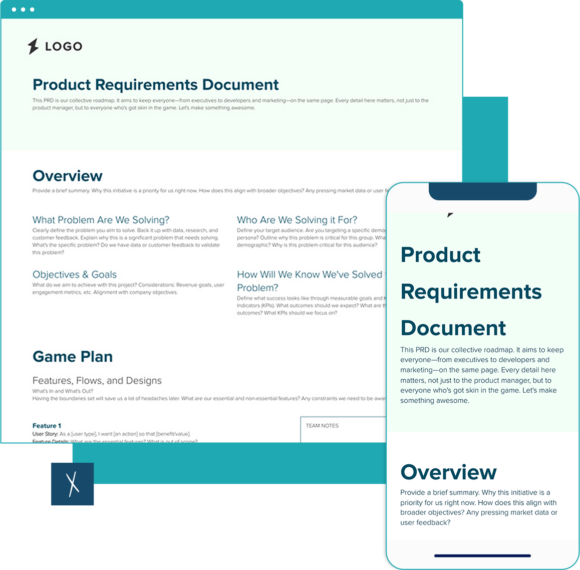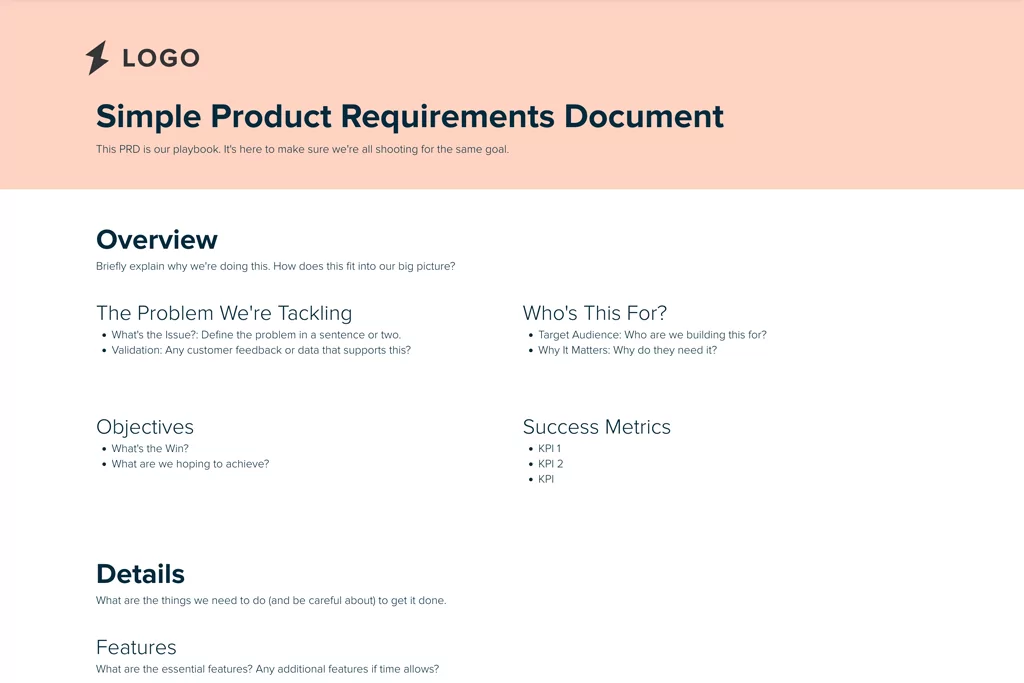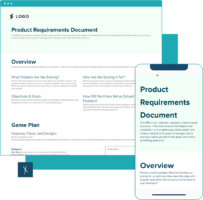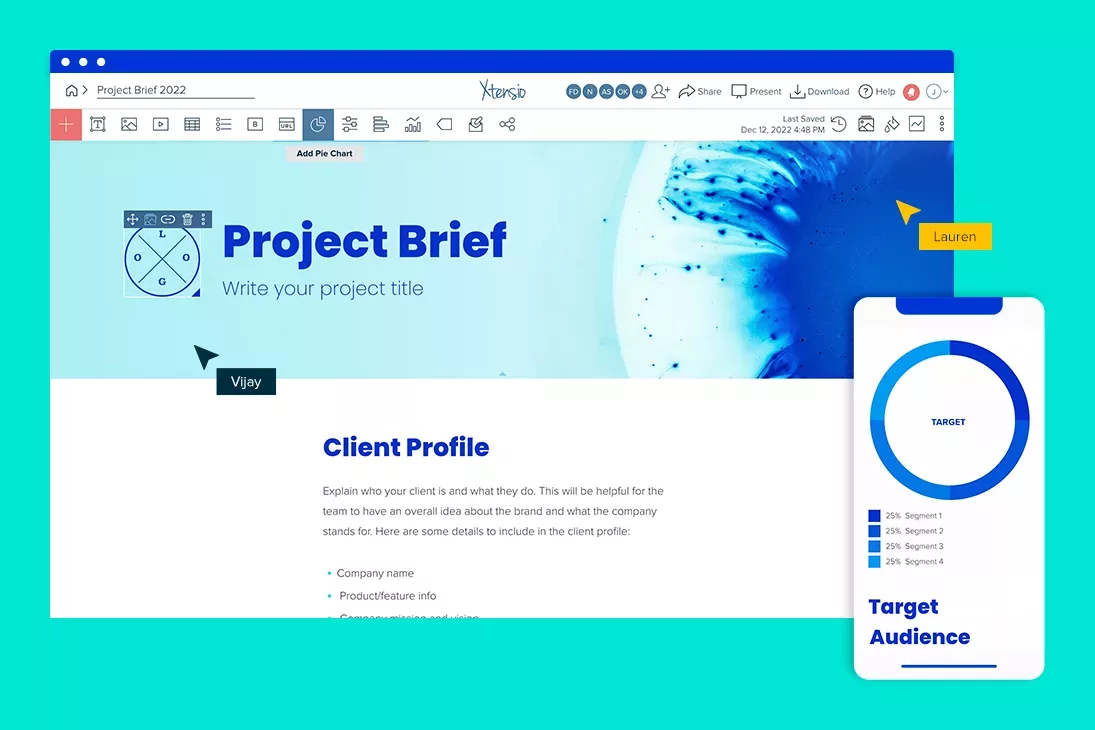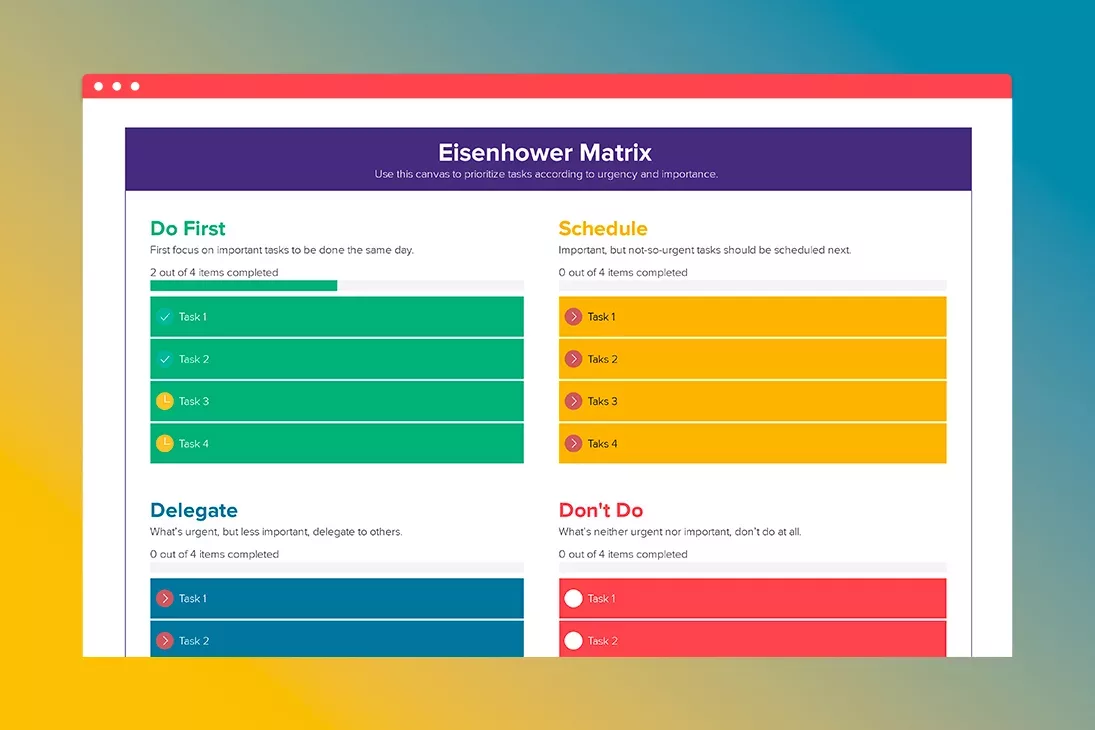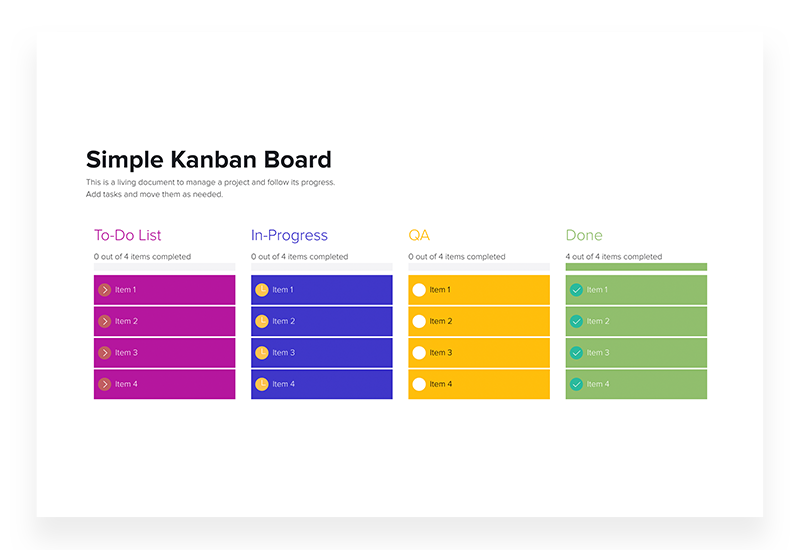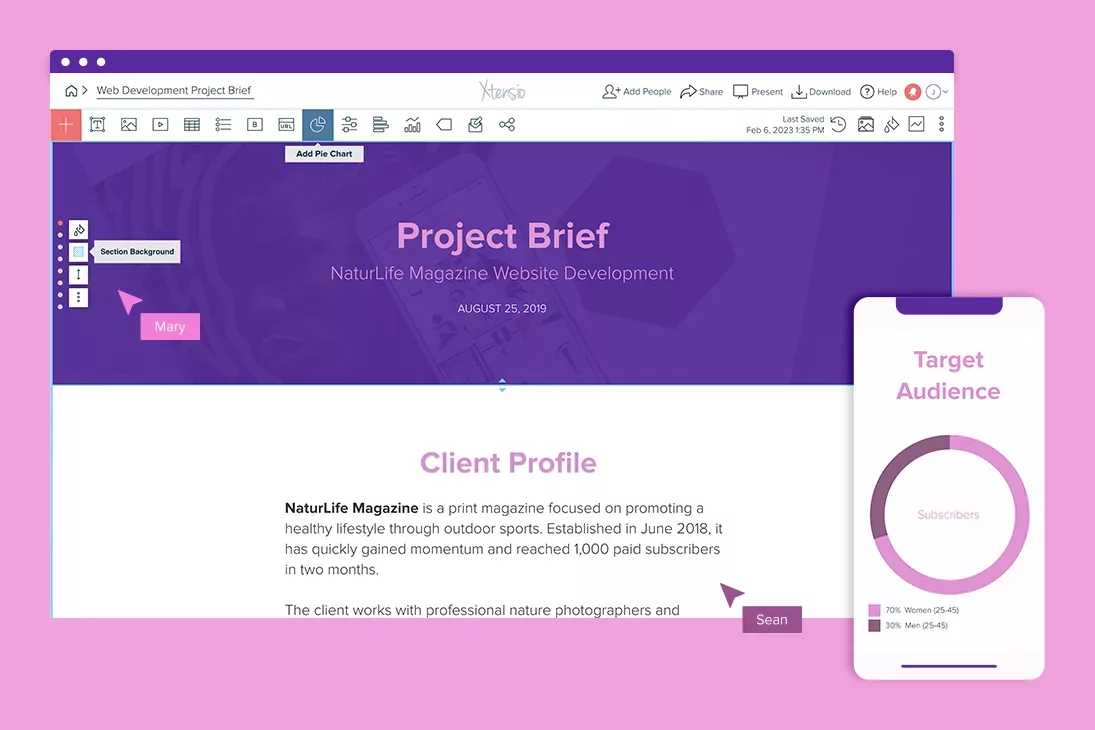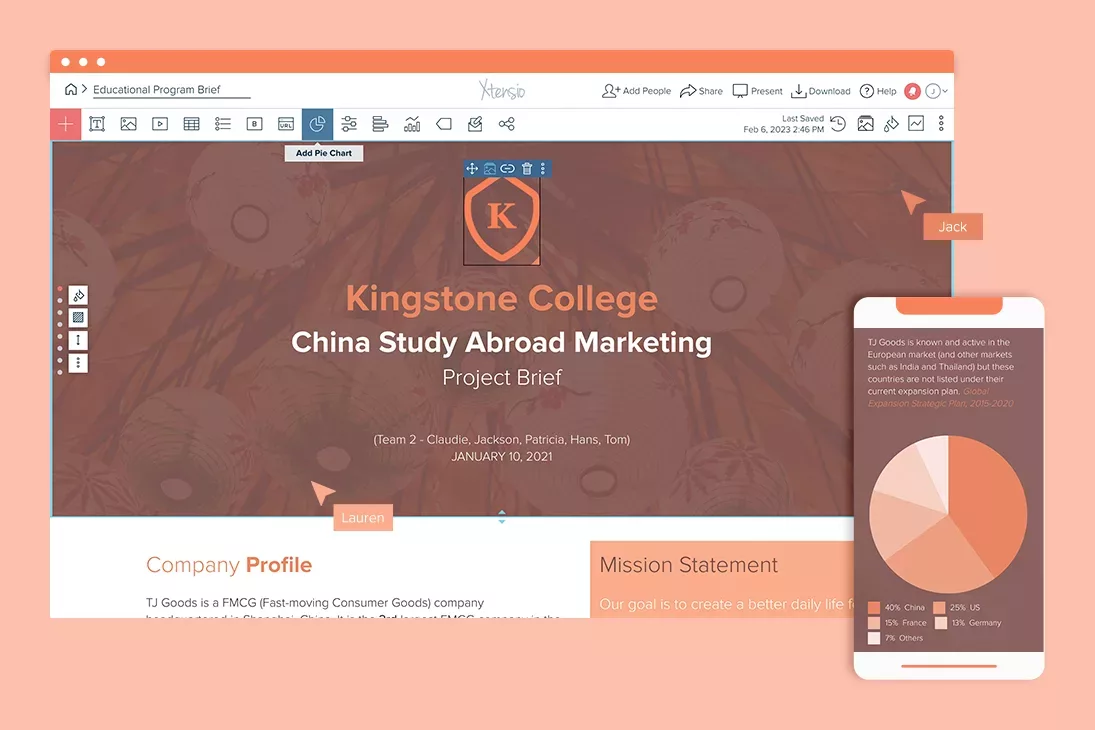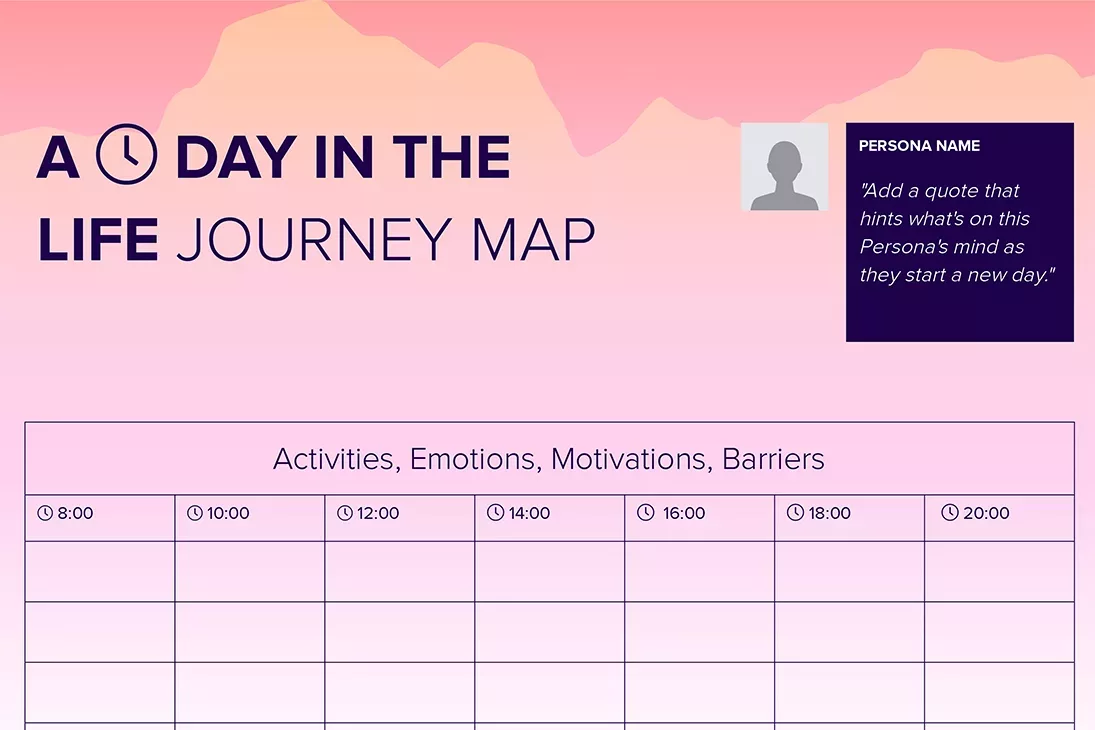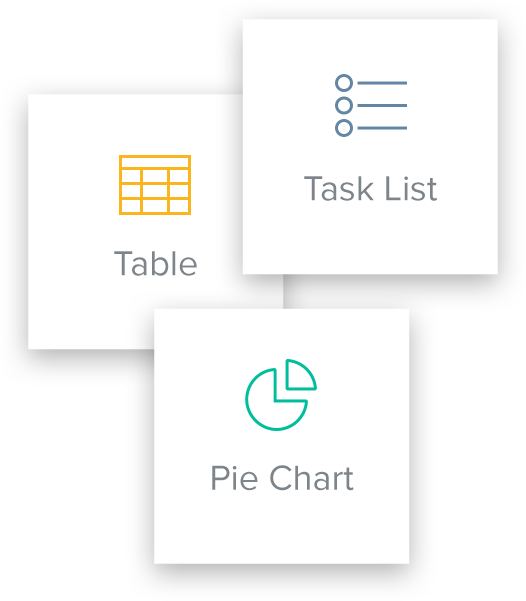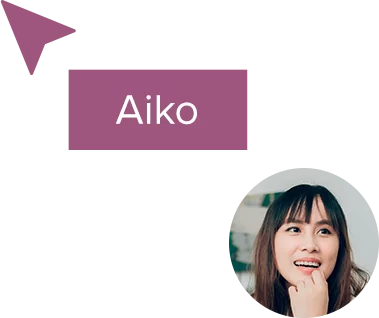Product Requirements Document Template
Transform your PRDs. Our Product Requirements Document Template is free, collaborative, and easy to customize and share. It has built-in instructions and even comes with the How To Create a Product Requirements Document guide. It is also responsive, interactive, and secure. This is the ultimate PRD your team will love.
Beautiful living documents, built like web pages.
Join 248,427 professionals using Xtensio.
Free
Dive in without worrying about fees.
Build for collaboration
Bring your team together right inside the template. Work together in real time.
Fully customizable
Just click and edit everything. Change it up to reflect your style or match your company’s colors and fonts. It’s all just drag-and-drop easy.
Includes guidance
Not sure where to start? We’ve got your back with handy tips, how-to guides, and prompts right where you need them, guiding you through each step.
Live
Unlike static PDFs, Xtensio folios are live and can be updated in real-time, ensuring your work remains current and adaptable to changes.
Interactive
15 module types to enhance your work. Add images, videos, task lists, charts, buttons, and more. Embed content from the apps and sites you already use. Make your documents more engaging and informative.
Easy to share
Share with a simple link, your stakeholders can see what you’re up to, anytime and anywhere. You can also present, embed, or download as PDF and PNG.
Accessible from any device
On the go or at your desk, your work is always ready for you. It’s all online, so you can pick up right where you left off from any device. It is responsive so it will look everywhere.
Comes with analytics
Get detailed insights on who is viewing your work and how they are consuming it.
Very simple and Intuitive
Jump right in without the steep learning curve. We’ve kept everything straightforward, so you can focus on what matters.
Secure and private
We take your privacy very seriously. Brainstorm in peace, knowing your ideas are protected.
Great support
Stuck on something? Reach out! We’re here to help with tips, tricks, and friendly advice.
Other Product Requirements Document templates
Teams use Xtensio to craft and share beautiful living documents.
248,427 users and counting.



Jeff Schenck
Marketing Manager @

David Nason

Grace Ghunaim
Global Chief Strategy Officer (CSO) @

Ben Cary
Founder @

Jennifer Alt
UI/UX Designer @

Zac Heisey
Director of Digital Marketing @

Jenny Johansson
UX Manager @

Ryan Dobson
Global Engineering Manager @
